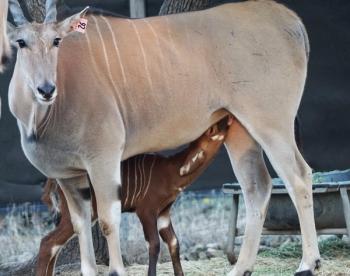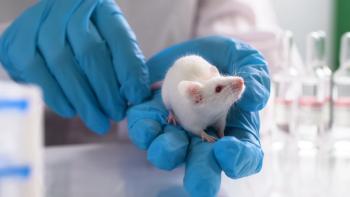
Enrichment for small mammals-what owners need to know
Laboratory animal medicine is greatly concerned with caring for small mammals away from their natural habitats&mdashgiving them the best life possible in service to their assistance with vital medical research. Spread the knowledge gained from research into helping research animals with your small mammal-owning clients.
(Shutterstock.com)Small mammals have exploded in popularity as pets over the past few years. Clients with these pets actively seek opportunities to enhance the lives of their small mammal pets just the same as they want to supplement the lives of cats and dogs with games, hiding spaces and toys to play with. However, clients are not as educated with regards to appropriate toys for small mammal pets. Since this market is rapidly growing and new items are available with regular frequency, veterinarians seeing these pets must be knowledgeable and up-to-date about what is available, what is suitable for the pet and the owners' lifestyle, and how to evaluate the items that accompany these pets on trips to your office.
Over the past decade, several reputable pet food companies have invested in research to improve our knowledge of small mammals' nutritional needs and enrichment preferences, resulting in drastic change in veterinary recommendations. Much has also been learned about these species from the field of laboratory animal medicine, where they are used in research to help develop cures and treatments for devastating diseases. Thanks to all of this work, veterinarians now have the opportunity to recommend or sell high-quality products from reputable vendors that enrich the lives of these pets.
What's missing in captivity
Because small mammals spend most of their time within a constrained cage environment for their safety, the challenge for veterinarians and owners is to ensure that these animals have opportunities to engage in species-specific behaviors that improve their overall well-being. For example, a wild mouse will spend a significant portion of its time foraging over a distance that measures in miles. When its domestic counterpart lives in a cage with food provided in a hopper or crock, there is a missed opportunity to allow the mouse to engage in a preferred behavior. A simple solution to this can be the provision of some or all of its food in a manner that encourages exploration of the cage environment and foraging for food.
Setting up the right stimulation
Mice. Most of the research that assesses environmental enrichment strategies in laboratory animal medicine focuses on the mouse. Studies have evaluated how a mouse interacts with its environment and with a variety of strategies to determine how to improve its well-being. Combined with an evaluation of the natural history of this species, the prevailing strategies involve interventions that mimic the natural environment. Mice thrive when provided with a complicated space, created with multi-level caging or the use of cage furniture, which recreates an environment similar to the burrows where their wild counterparts live. They also preferentially select and actively engage with nesting materials formulated from a combination of long strips of paper and softer cloths that allow them to make complicated nests where they can comfortably sleep and maintain their preferred body temperatures. These interventions are simple to implement in most mouse caging and provide significant improvements to animal well-being.
Community living
Often, one of the simplest ways to enrich a rodent is to establish group housing. Rats, gerbils and guinea pigs tend to generally get along well with one another and preferentially select group housing when given the opportunity. A little more caution is required with male mice and female hamsters because some individuals of these species tend to fight when socially housed.
Rats. Extrapolating these results to other small mammals can be useful but needs to be done with caution and an eye to ensuring that the desired results have been achieved. For example, though mice universally enjoy engaging in nest-building behavior, this behavior is much more strain-dependent for rats. A commonly albino rat, the Sprague Dawley, seems to benefit from the provision of nesting material, but its hooded cousin-the fancy rat, which is most commonly seen as a pet-does not interact with nesting material in a constructive manner. In general, rats benefit from the provision of complex environments that allow them to climb, explore and maintain normal postural adjustments, including rearing on the hind limbs.
Gerbils. Gerbils benefit from toys, running wheels and cage furniture and substrates that encourage digging and burrowing, allowing this species to more fully engage in their very active species-specific behaviors.
Hamsters. Hamsters enjoy digging and burrowing, so they benefit from the provision of deep bedding and shelters.
Nutrition nuggets for all. All of these species also benefit from the provision of wood or plastic materials that allow them to gnaw, assisting them in proper care of their continuously growing incisors. Their food is typically provided as an extruded block, which also wears down the incisors. Although other treats, such as sunflower seeds, can be provided for foraging enrichment, the amount of these treats should be controlled to prevent obesity and malocclusion problems.
Rabbits and guinea pigs. Original recommendations for rabbit and guinea pig care included an all pelleted diet and chew toys. The current norm is to provide them with a diet primarily based on a grass hay (e.g. Timothy hay) supplemented by pellets. Enrichment should also be focused on their natural behavioral needs for security or hiding and continual grazing. Female rabbits will only build immediately before kindling, while guinea pigs do not create nests at all. But both species benefit from the provision of houses in which they can hide. Guinea pigs also enjoy the ability to move to and circle the perimeter of their cage.
Since both species need to wear down their incisors, structural items that are also edible are preferred. Additionally, nonedible items (e.g. items made of an appropriate hard plastic) that provide hiding spaces but do not pose a hazard after continual wear and can be easily sanitized are also preferred. Items that present hazards, such as sharp edges or holes big enough for teeth to get stuck in, should not be purchased for rabbits and guinea pigs. Items that become worn over time should eventually be discarded if a hazard becomes apparent or it cannot be kept clean.
Although much fewer in number, sugary or carbohydrate-based treats must be avoided as this will disrupt their gut metabolism. Many clients are still drawn to treats and toys that they themselves would want to have, so client education is key in order for them to understand what is best nutritionally and behaviorally for rabbits and guinea pigs.
Exercise your expertise
Veterinarians are now able to provide species-specific advice and guidance to clients based on recent research and advances focused on making the lives of small mammal pets better. As their population in the pet realm continues to increase, this will help ensure that veterinarians remain a primary source of information for the owners for these cute and fun pets.
Stacy Pritt, DVM, MS, MBA, CPIA, DACAW, is the Director of the Institutional Animal Care and Use Committee Office at the University of Texas Southwestern Medical Center and the current vice president of the American Veterinary Medical Association.
Debra Hickman, DVM, MS, DACLAM, DACAW, is the Attending Veterinarian for the School of Medicine at Indiana University, Indianapolis. She also has an active research lab that evaluates interventions to improve the well-being of animals used in research.
Both Drs. Pritt and Hickman have won numerous awards for training and research.
Newsletter
From exam room tips to practice management insights, get trusted veterinary news delivered straight to your inbox—subscribe to dvm360.






